Did you know the Floyd Monument is the first designated National Historic Landmark of the United States? Whoa! Being on the U.S. National Register of Historic Places, it’s also a great place to bring a

Did you know the Floyd Monument is the first designated National Historic Landmark of the United States? Whoa! Being on the U.S. National Register of Historic Places, it’s also a great place to bring a lunch and picnic. My husband and I have spent an afternoon relaxing on the benches listening and watching the I-29 traffic, gazing over Iowa, Nebraska, and South Dakota.
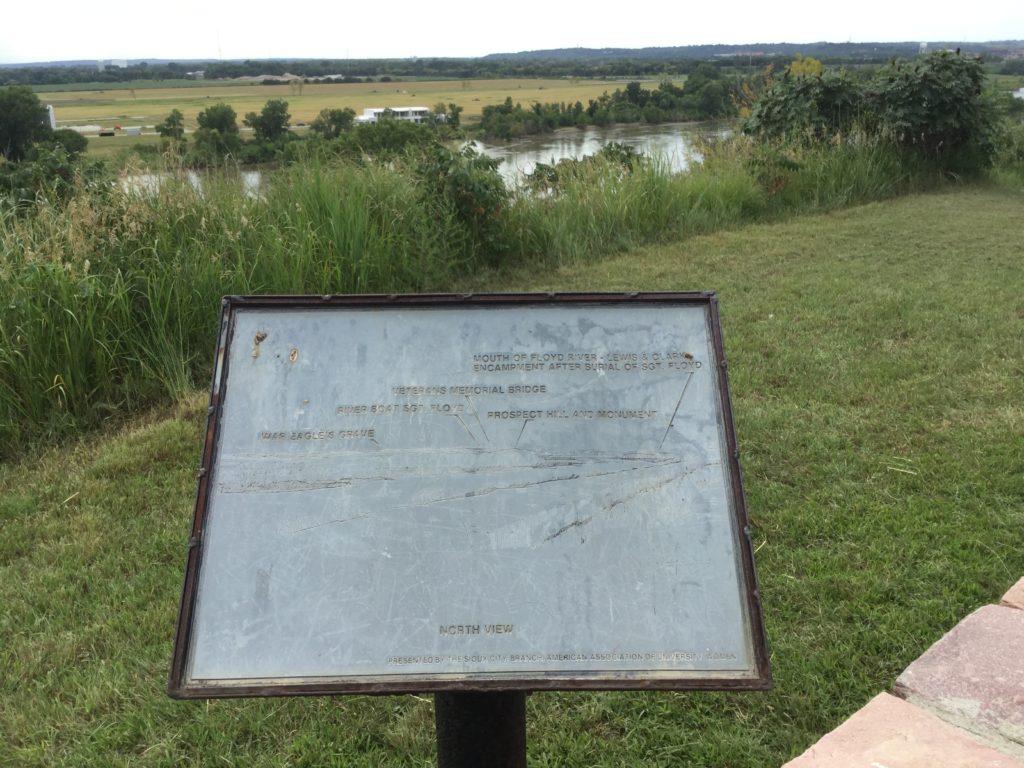

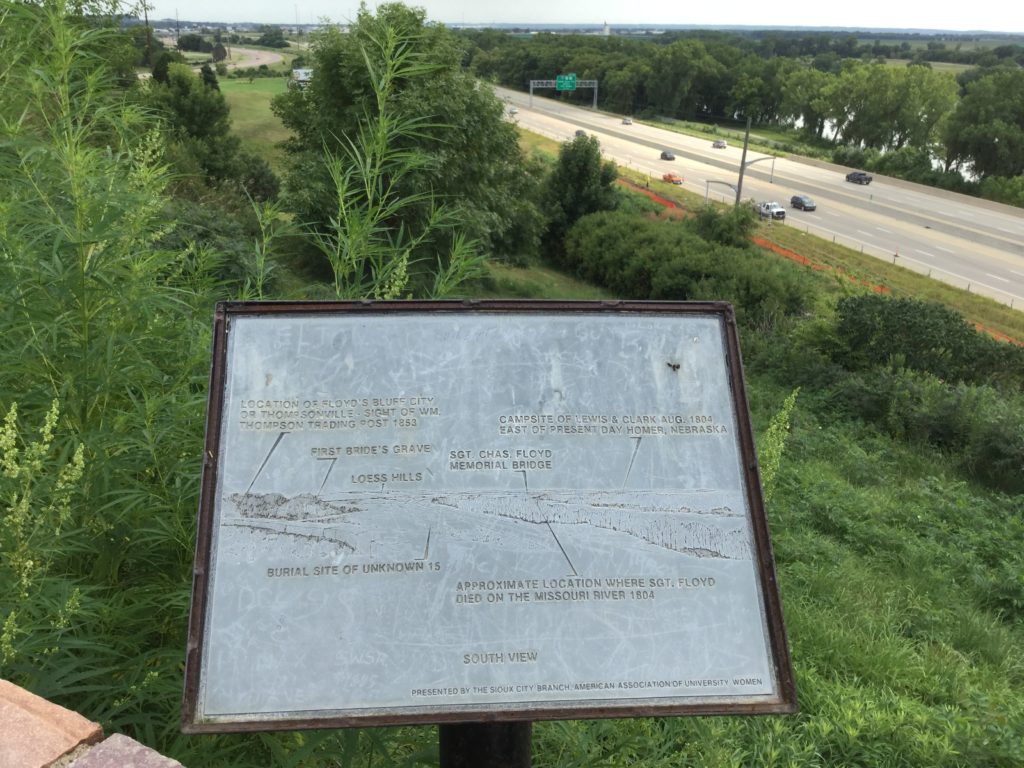

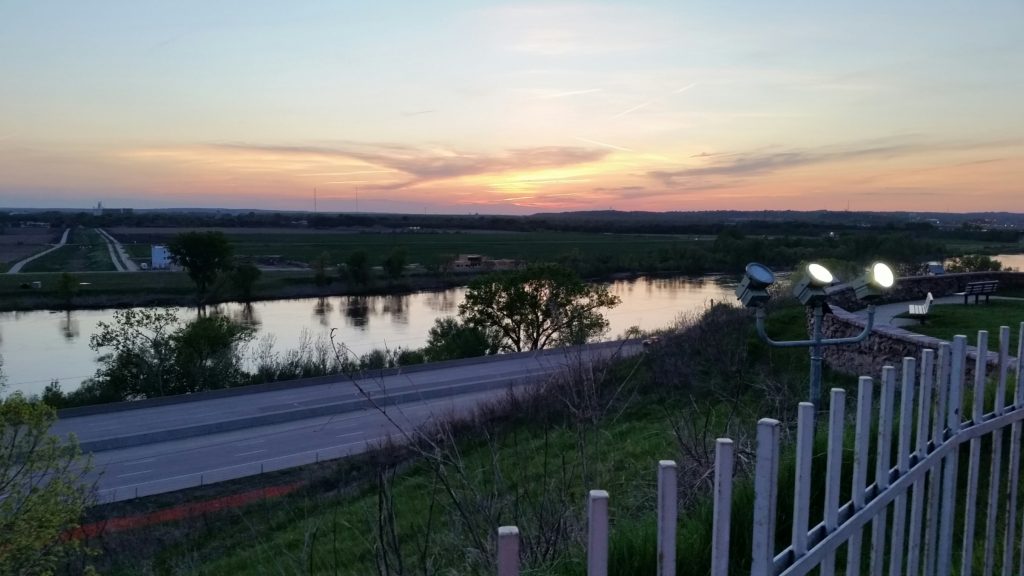
Sioux City’s landmark
Located directly off Lewis Boulevard, the Floyd Monument (a 100-foot obelisk) is part of a 23-acre park. It is one of the first things you see on I-29 when entering Sioux City from the South.


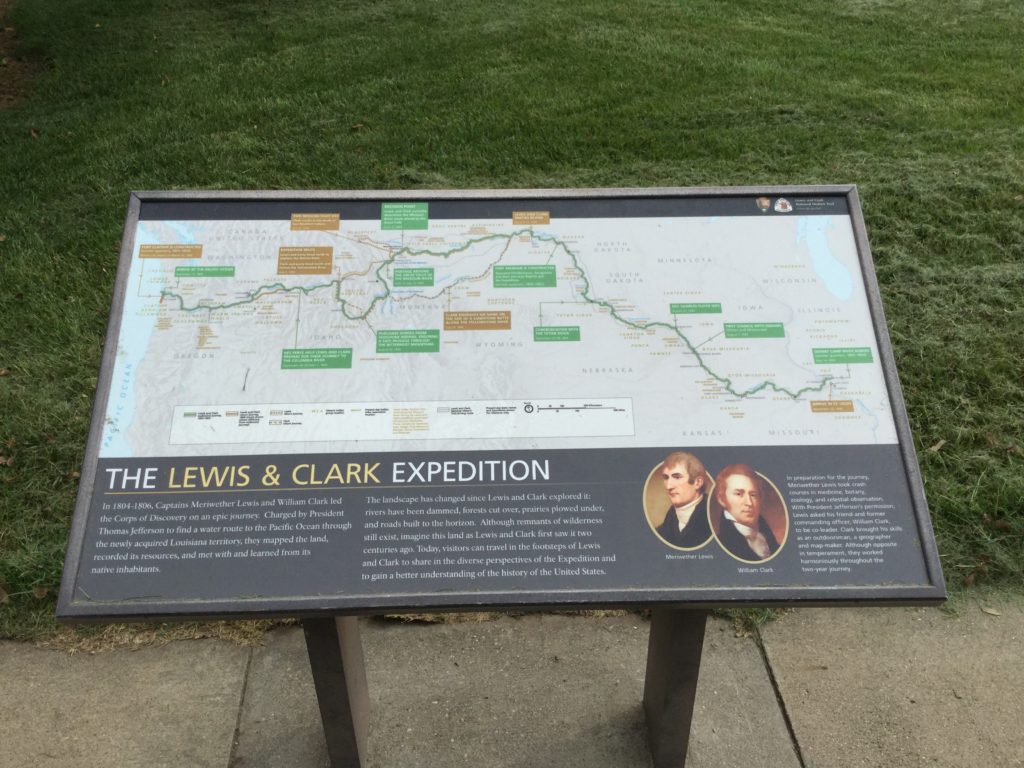
Built in 1901, the monument is made of heavy Kettle River sandstone, and marks the final resting place of Sergeant Charles Floyd, Jr., who was the only member of the Corps of Discovery to die on Lewis and Clark’s journey to explore the Louisiana Territory.
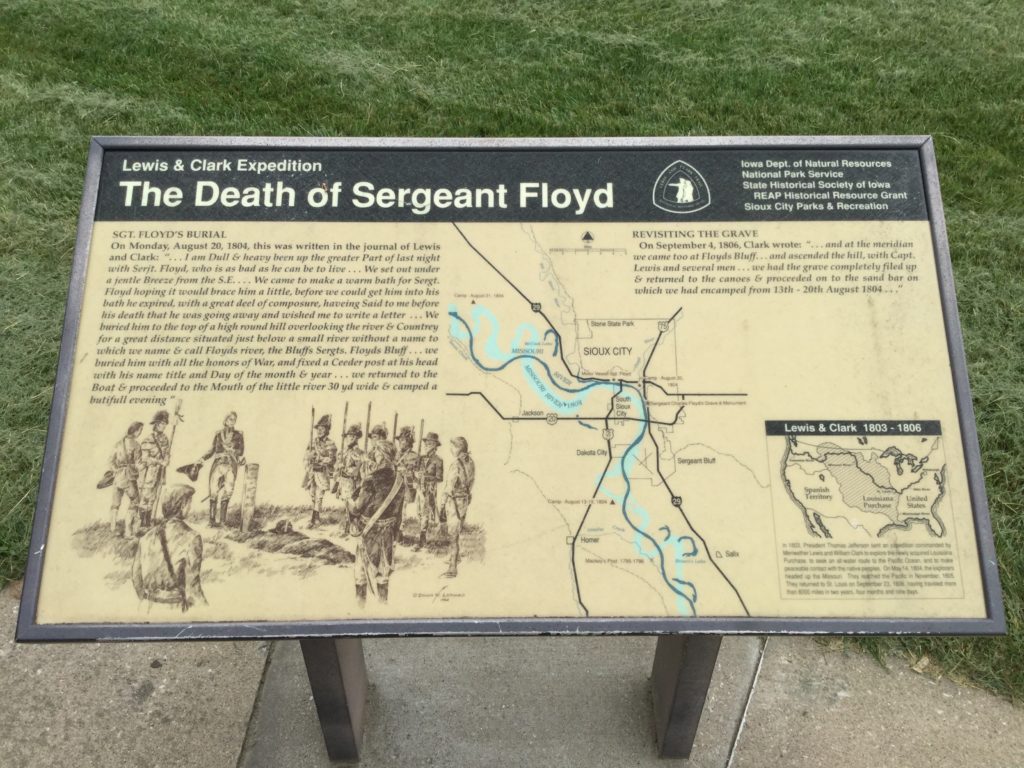
Passing away from appendicitis on August 20th 1804, Sergeant Floyd was buried with a cedar post marking his grave. In later years his resting place would become a landmark for adventurous travelers.
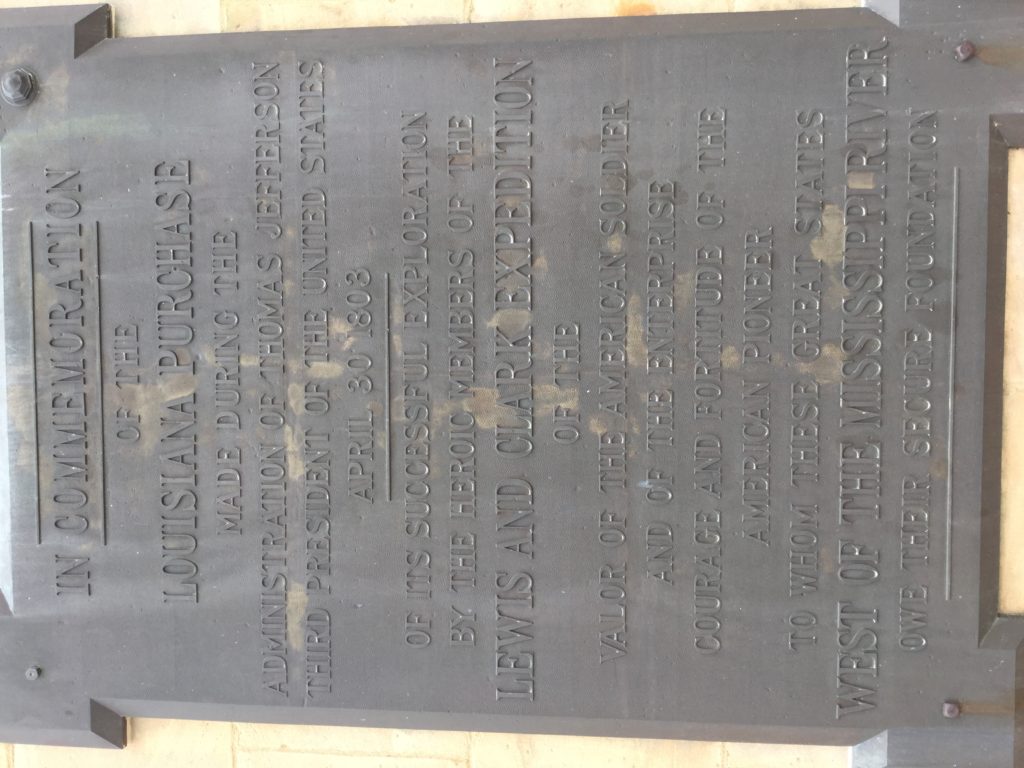
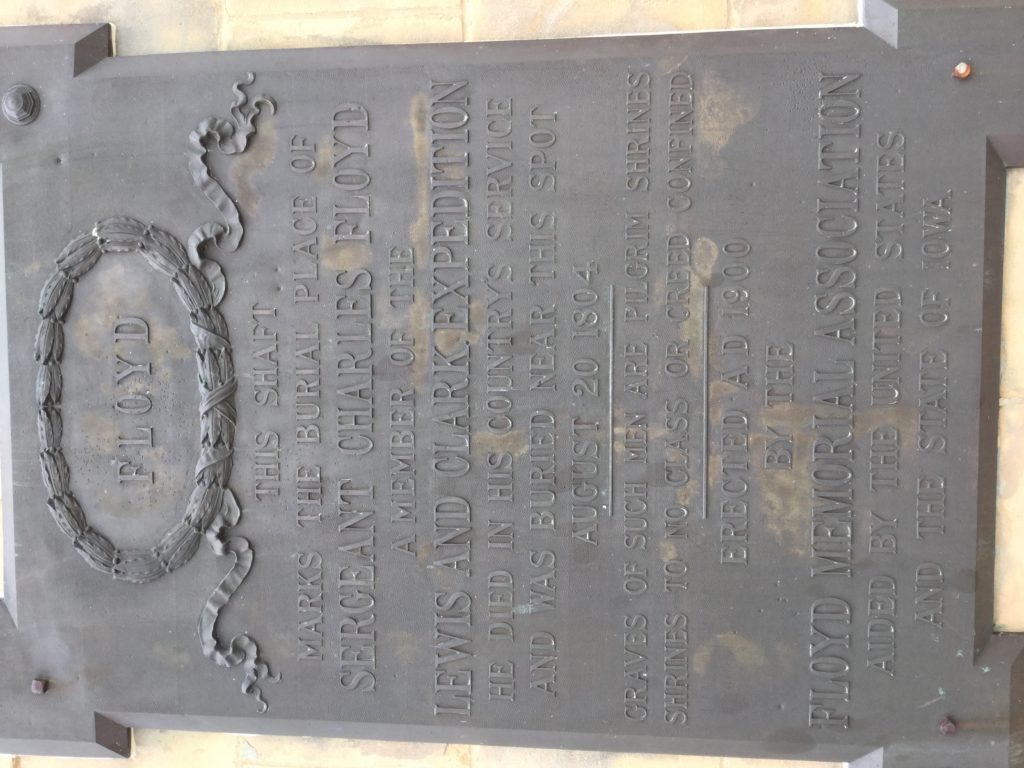
Moving Floyd
In 1857 Floyd’s remains were moved 600 feet back away from the bluff after his grave was disturbed due to rain erosion.
After Floyd’s journals of Lewis and Clark’s expedition gained renewed interest in 1894, inquisitive historians sought to find his grave. Realizing Floyd’s resting place had been vandalized by grave robbers and trampled by cattle, it was decided to rebury his remains yet again on August 20, 1895.
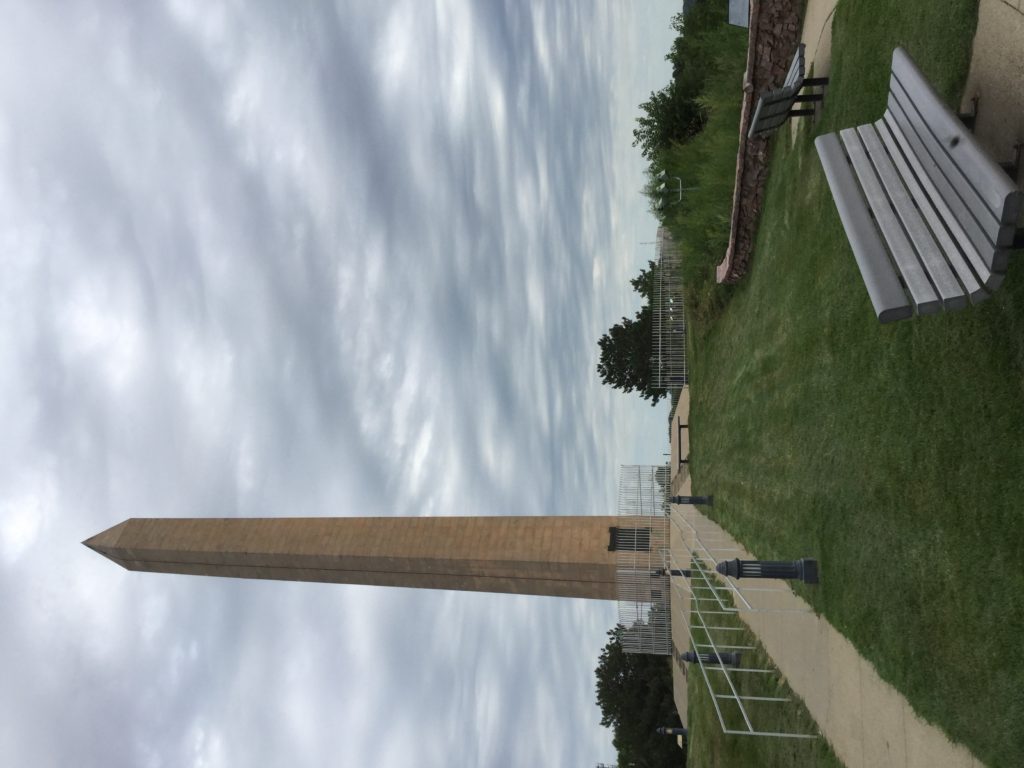

Construction of Floyd Monument
Wanting to honor Sergeant Floyd, and not allow his remains to be disturbed ever again, the citizens of Sioux City helped form the Floyd Memorial Association in 1895. With funding backed by the government, state, county and private citizens, $13,400 was raised to help construct a permanent monument.
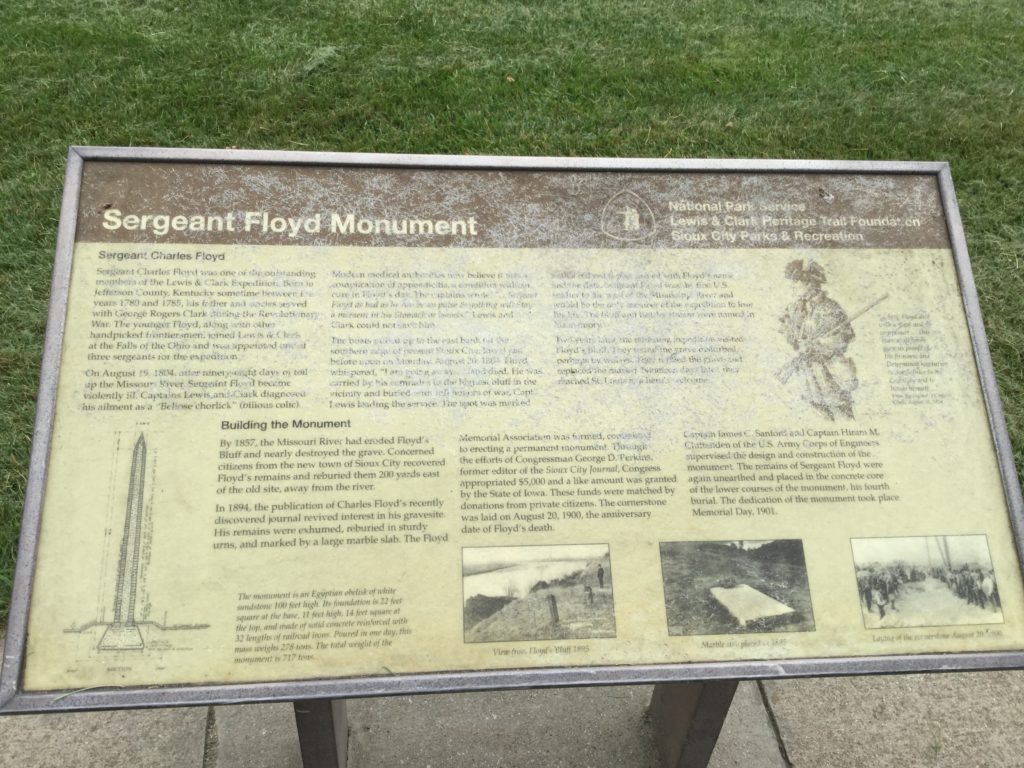
Foundation of said monument was laid May 29th, 1900, and fittingly on the ninety sixth anniversary of Floyd’s death, the final cornerstone was put into place August 20th, 1900.
In addition, the capstone was placed atop the obelisk on April 22nd, 1901, with a stupendous ceremony held Memorial Day, May 30th, 1901 drawing thousands of spectators.
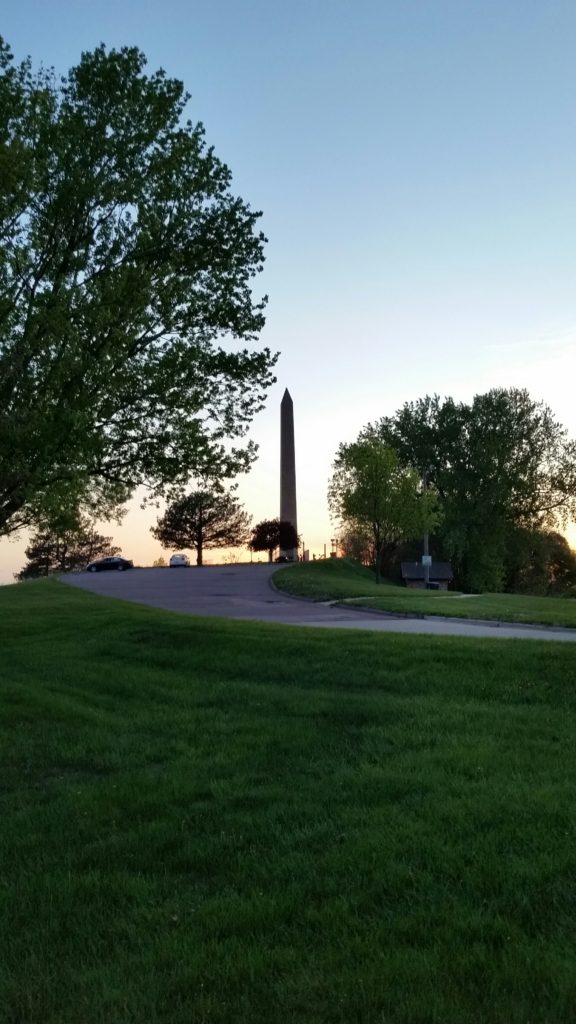
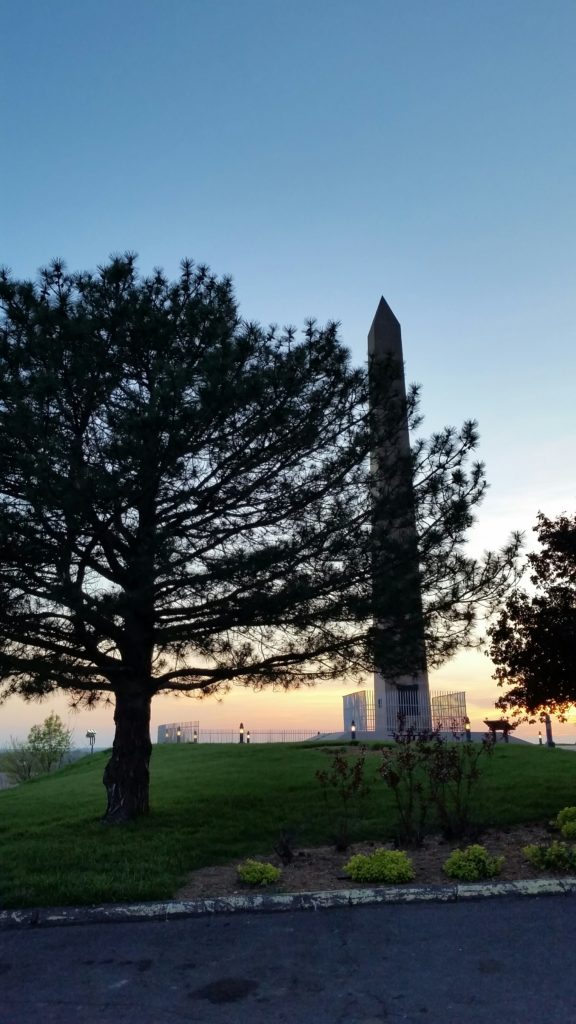
215 years later
Current day, the Floyd Monument holds the status of a High Potential Historic Site along the Lewis and Clark National Historic Trail.
Furthermore, if you are a curious traveler like I am, you’ll find a plethora of information on the monument, and Sergeant Floyd himself, at the Downtown Public Museum, and the Lewis and Clark Interpretive Center.
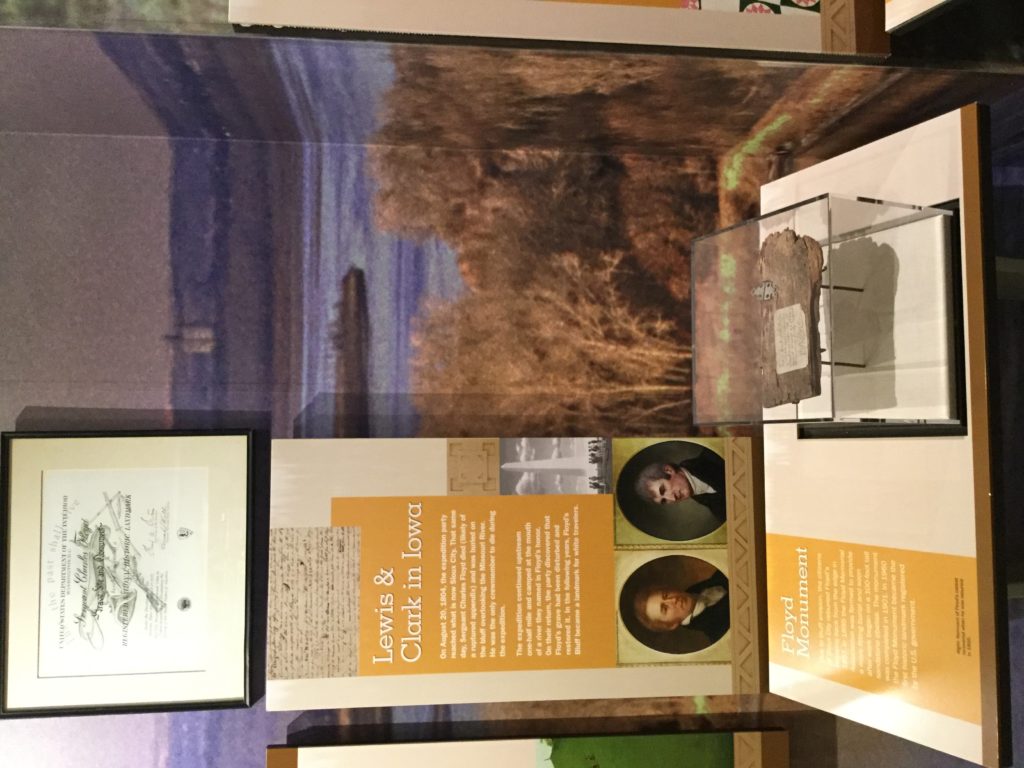

Plan your visit
With picnic tables and lighted pathways, this is the perfect spot to watch the sunset. Free to the public, the monument is open 24 hours a day. Scenic, quiet, yet easily accessible from the Lewis Boulevard, I hope you are able to make a visit to this iconic Sioux City landmark.
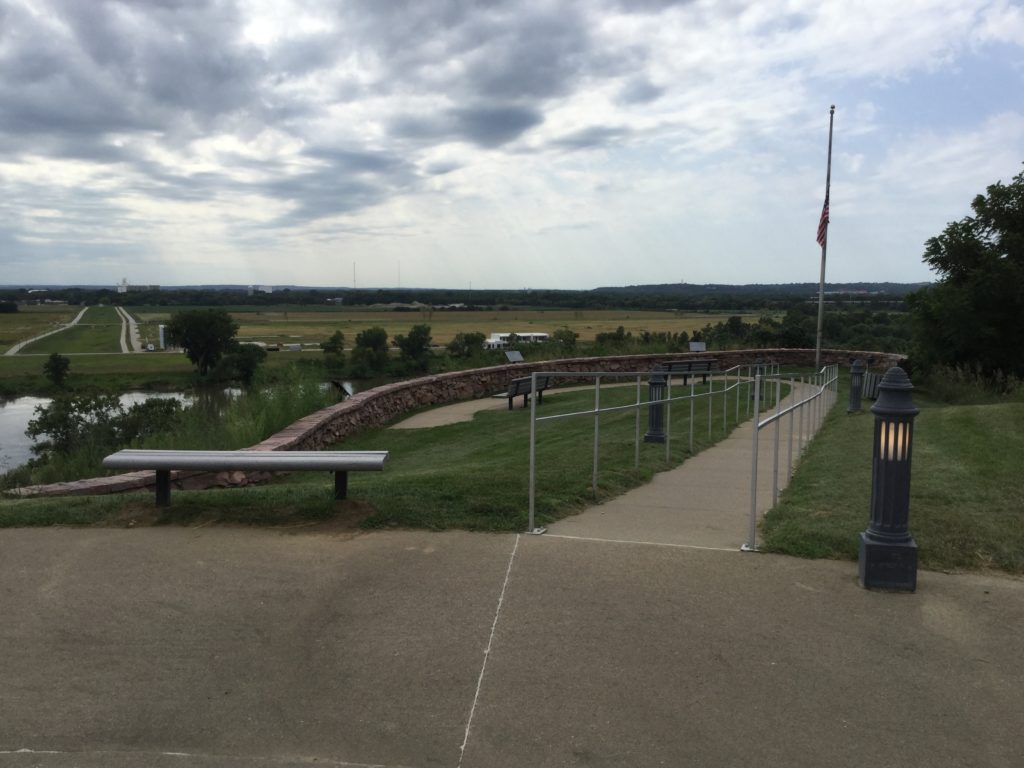
2601 S. Lewis Boulevard
Sioux City, Iowa 51103


Very interesting. I will need to visit!